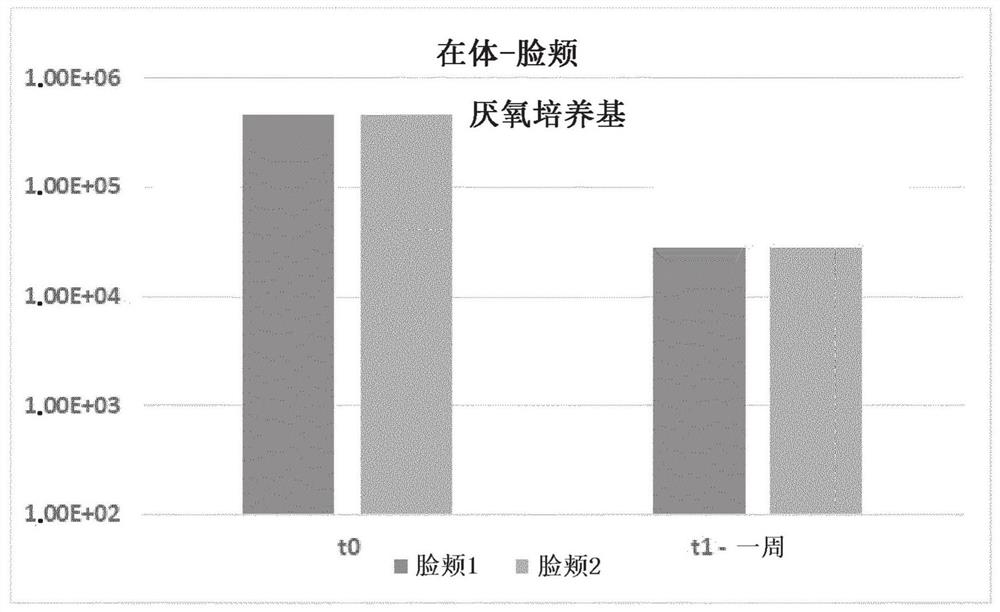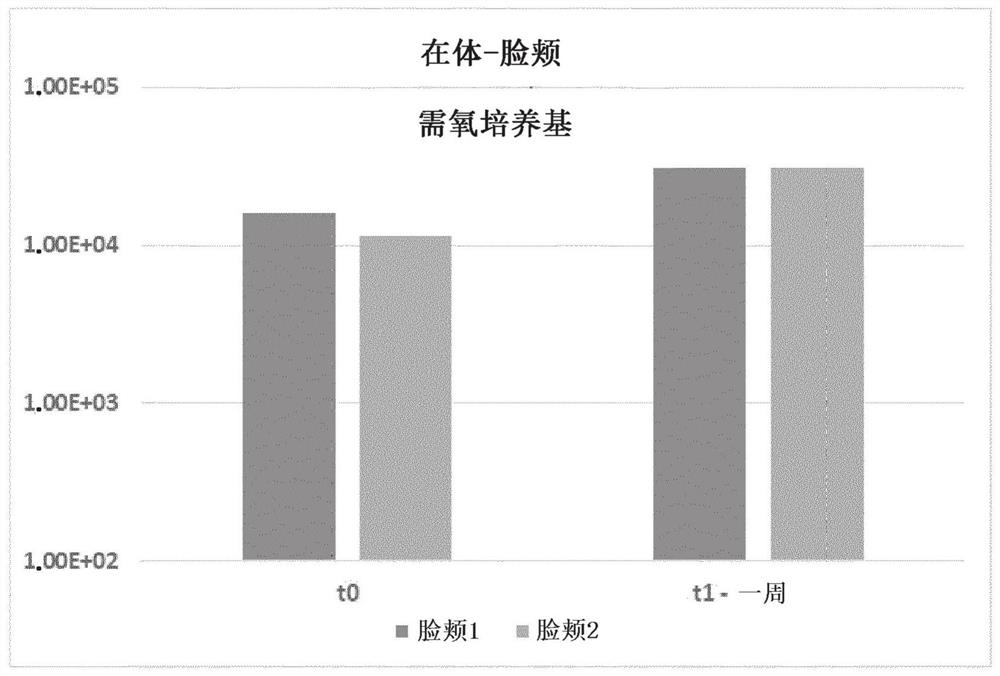Cosmetic preparation with anisic acid and levulinic acid with selective antimicrobial activity
An anti-microbial, levulinic acid technology, applied in the field of cosmetics and dermatological preparations, can solve the problems of changing the composition of skin flora, unclear and other problems, and achieve the effect of high antimicrobial selectivity
- Summary
- Abstract
- Description
- Claims
- Application Information
AI Technical Summary
Problems solved by technology
Method used
Image
Examples
Embodiment 1
[0033] Example 1: Preparation and Growth Experiment of Bacterial Suspension
[0034] Staphylococcus epidermidis (DSM 1798) was removed from cryovials (EN 12353), spread on CASO agar plates and incubated at 37°C for 24 hours. Then the second generation was created. 10 ml of BHI medium and 5 g of glass beads (4 mm in diameter) were inoculated with the second passage and shaken for 3 minutes. Thereafter, the batch was adjusted to an OD600 of 0.1 and then diluted 1:10 with diluent. The bacterial suspension was then used for growth assays.
[0035] Test - Growth Assay for Staphylococcus epidermidis
[0036] Add 10 μL of bacterial suspension to each well of a 24-well plate and dry completely (at least 45 min under a sterile bench). After drying, 10 mg of the formulation to be investigated (see Table 1) was pipetted and distributed in the wells by means of a T-squeegee. The control group remained untreated. Plates were stored uncovered in a wet incubator at 37°C and 90% air hum...
Embodiment 2
[0046] Example 2: ATA test
[0047] The ATA test is used to determine the antibacterial effect of cosmetic preparations after twice daily use. The duration of the test is usually 1 week. Application of the test formulations and measurement of activity occurred on the relevant part of the consumer, ie the cheeks. The target amount is the bacterial count of aerobic and anaerobic bacteria.
[0048] All subjects were pretreated for 3 days with the indicated wash gels. After rinsing the cheeks, "Test Formulation 5" described in Table 1 was applied according to the directions. It is then applied via a Floq swab. Apply 3x10 in a defined pattern on a large 5cm x 5cm area of the cheek. smeared patterns such as image 3 shown. During the sampling cycle, the Floq swab was soaked in rinse buffer, and the swab remained in the rinse buffer after the third sampling. The solution was diluted directly and plated on 2 agar plates per sample by spiral plate. The application is then re...
Embodiment 3
[0050] Example 3: Suspension Test
[0051] The effect of the formulations according to the invention was further investigated in suspension tests with Staphylococcus epidermidis and Dermatobacter acnes. Glycerol stock cultures of Staphylococcus epidermidis (DSM 1798) and Dermatobacter acnes (DSM 1897) established according to European Standard 12353 were stored in a refrigerator at 5°C. First passages were prepared from these liquid stock cultures. Here the corresponding cultures are spread on agar plates (Dermobacterium acnes: COST agar, Staphylococcus epidermidis: COAST agar) by means of sterile disposable inoculation loops and then incubated. The D. acnes cultures were incubated at 37°C for 5 days, while the S. epidermidis cultures were incubated at 37°C for 24 hours. The second passage was then generated from this first passage by extracting several colonies with a sterile disposable inoculation loop and spreading them onto new agar plates. The second generation was the...
PUM
 Login to View More
Login to View More Abstract
Description
Claims
Application Information
 Login to View More
Login to View More - R&D
- Intellectual Property
- Life Sciences
- Materials
- Tech Scout
- Unparalleled Data Quality
- Higher Quality Content
- 60% Fewer Hallucinations
Browse by: Latest US Patents, China's latest patents, Technical Efficacy Thesaurus, Application Domain, Technology Topic, Popular Technical Reports.
© 2025 PatSnap. All rights reserved.Legal|Privacy policy|Modern Slavery Act Transparency Statement|Sitemap|About US| Contact US: help@patsnap.com



